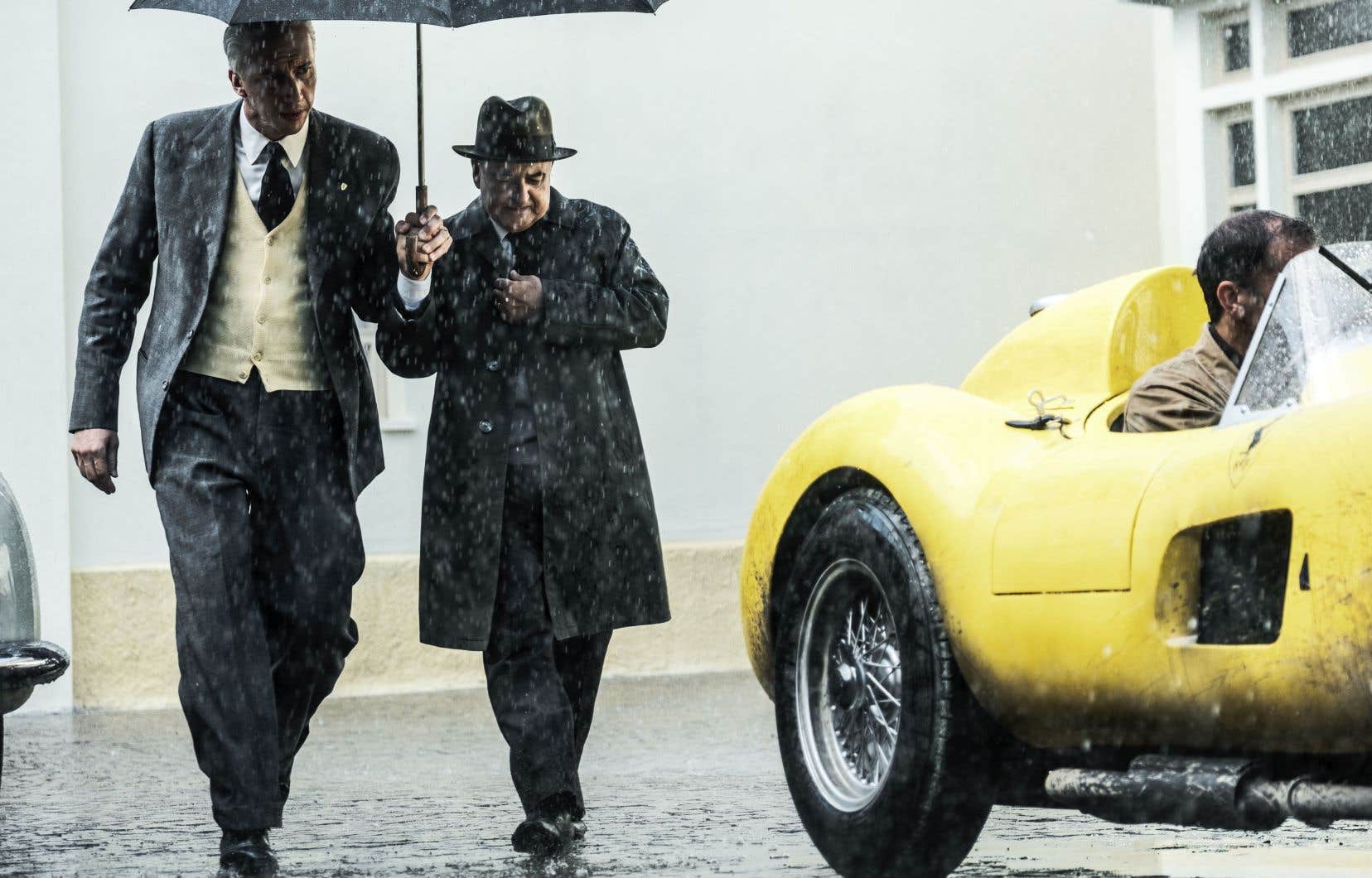Michael Mann is one of those filmmakers who, having made several remarkable films, enjoys an immense reputation: Thief (The solitary), Manhunter, The Last of the Mohicans (The Last of the Mohicans), Heat (Tension), The Insider (The insider)… However, his two most recent films, Public Enemies (Public enemies) And Black hat (Black hat), are frankly missed. Upon the announcement of Ferrari (VF), a film dedicated to the famous automobile manufacturer, some were already ready to bet on Mann’s return to the forefront of the greatest contemporary filmmakers. Alas, in this ambitious project starring Adam Driver, there are many swerves.
Let’s move on from the question of the credibility of a cast of American (and Spanish) performers playing Italians: the process is as old as Hollywood; you have to get used to it. After playing fashion mogul Maurizio Gucci in House of Gucci (The Gucci saga), of sad memory, Adam Driver therefore takes up the accent to play Enzo Ferrari.
The always intense actor offers an inhabited, felt performance, but, in this specific case, sometimes too studied. We perceive the “actor’s work”.
An example of this occurs early on, when Enzo visits the mausoleum where his son rests. Driver delivers his monologue with conviction and emotion. Come the sobs… We should be upset. We are not.
Then, here comes Penélope Cruz, in the role of Laura Ferrari, cheated wife and bereaved mother. In theory, the actress has little material: a few words. In practice, however, Cruz, with his painful expression and his silent tears, releases an incredible emotional charge.
As talented as he is, Adam Driver never achieves this authenticity, on edge. In almost all of their joint scenes, Cruz outshines her. And since said scenes are numerous…
A pivotal period
In fact, the film, which takes place in 1957, looks at both the personal and professional aspects of Enzo Ferrari’s life. Why 1957? Because, dramatically speaking, this is a pivotal period, since nothing was going well for the former car racer turned entrepreneur.
Indeed, his already damaged marriage was about to explode, and his longtime mistress, Lina Lardi (Shailene Woodley), was becoming impatient, rightly so, on behalf of their son, Piero. At the same time, the Ferrari house, founded ten years earlier with Laura, was on the verge of bankruptcy.
Hence the absolute necessity of winning that year the Mille Miglia, a motor competition of almost 1,600 kilometers taking place exclusively on public roads.
The film is far from constituting a departure from the road, to remain in the analogies of circumstances, but the slippage lies in wait. On the intimate side, there is obviously the fact that Driver’s composition suffers from comparison with that of Cruz. But it is also true in relation to Woodley’s interpretation. Very natural, the latter’s game makes Driver’s play seem artificial.
The passages linked to the Ferrari team, including the interactions between the protagonist and his drivers, are on the other hand more homogeneous.
Unfortunately, interest between the personal and professional fronts fluctuates a lot: construction defect or narrative contamination, it depends.
Inspired staging
You should know that the screenplay attributed to Troy Kennedy Martin, who died in 2009 and known for The Italian Job (Gold is disappearing ; 1969), is based on the biography Enzo Ferrari: The Man, the Cars, the Races, the Machinewritten in 1991 by automotive journalist Brock Yates.
At the time, the production company of a certain Silvio Berlusconi acquired the rights, but nothing came of it. In 2004, Sydney Pollack was to direct an adaptation with Al Pacino, but the project failed. The same year, Michael Mann, interested from the very beginning, tried his luck, in vain. Failed again in 2010.
This means that Mann had time to think about his creation. Bathed in a light reminiscent of that of The Godfather (The Godfather), its staging is often inspired.
The racing sequences, both on the circuit and on the road, are gripping. After a quick succession of front, rear, side and aerial shots, bang! a close-up of the pilot’s eyes catches us. We’ll leave it to the experts to judge the level of authenticity, but on a cinematic level, it’s mind-blowing.
There are also two terrible accidents that Mann brilliantly stages, including one in which the pilot, propelled into the air, looks like a rag doll. The overall plan then favored amplifies the impression of human fragility in the face of these whirring machines. There are too few such visceral moments.
Between the great mechanical spectacle and the small human theater, Ferrariloses momentum.
